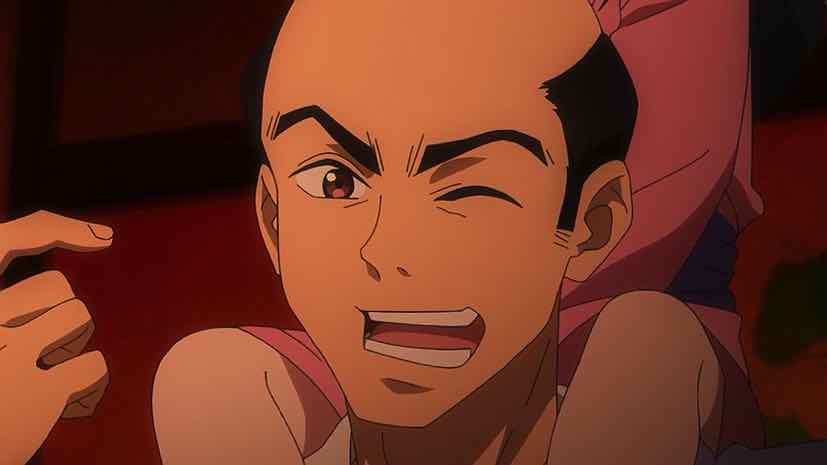 Worlds are colliding. It’s fitting that the two best shows of the season should overlap, with the Ashikaga Clan of Nige Jouzu no Wakagimi making an appearance in Sengoku Youko. A couple of centuries-plus have passed and they come off a lot better here (one of them anyway). There’s something of a BokuYaba–Tengoku Daimakyou dynamic between these two series, where the one started off as the better anime but I always felt the other would eventually surpass it based on the manga being superior. Tengoku clung on stubbornly, its adaptation was that sublime, before the sheer magnificence of BokuYaba’s second season material finally overtook it.
Worlds are colliding. It’s fitting that the two best shows of the season should overlap, with the Ashikaga Clan of Nige Jouzu no Wakagimi making an appearance in Sengoku Youko. A couple of centuries-plus have passed and they come off a lot better here (one of them anyway). There’s something of a BokuYaba–Tengoku Daimakyou dynamic between these two series, where the one started off as the better anime but I always felt the other would eventually surpass it based on the manga being superior. Tengoku clung on stubbornly, its adaptation was that sublime, before the sheer magnificence of BokuYaba’s second season material finally overtook it.
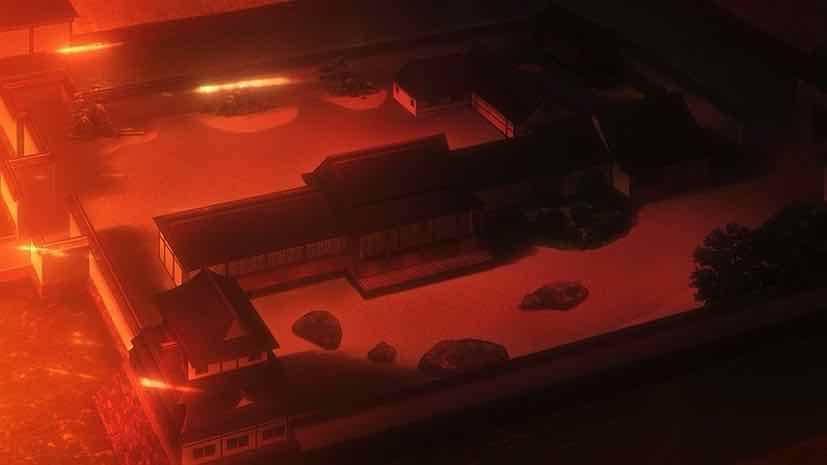 Will the same happen here? I kind of expect it, because as much as I love The Elusive Samurai (and Heavenly Delusion) Sengoku Youko is better. And we’re really headed into a massively killer stretch, starting with its Kyoto Arc. And Askikaga Yoshiteru, the bloke we met briefly at the end of last week’s episode, is a big part of it. He takes an immediate interest in Shinsuke and his party for reasons that are not immediately clear. What is immediately clear is that Teru is a bit of an odd duck (and keeps trying to fly like one). He’s read Shinsuke’s letter to Raizou (who was out and about) and gone into the city himself to fetch this crew.
Will the same happen here? I kind of expect it, because as much as I love The Elusive Samurai (and Heavenly Delusion) Sengoku Youko is better. And we’re really headed into a massively killer stretch, starting with its Kyoto Arc. And Askikaga Yoshiteru, the bloke we met briefly at the end of last week’s episode, is a big part of it. He takes an immediate interest in Shinsuke and his party for reasons that are not immediately clear. What is immediately clear is that Teru is a bit of an odd duck (and keeps trying to fly like one). He’s read Shinsuke’s letter to Raizou (who was out and about) and gone into the city himself to fetch this crew.
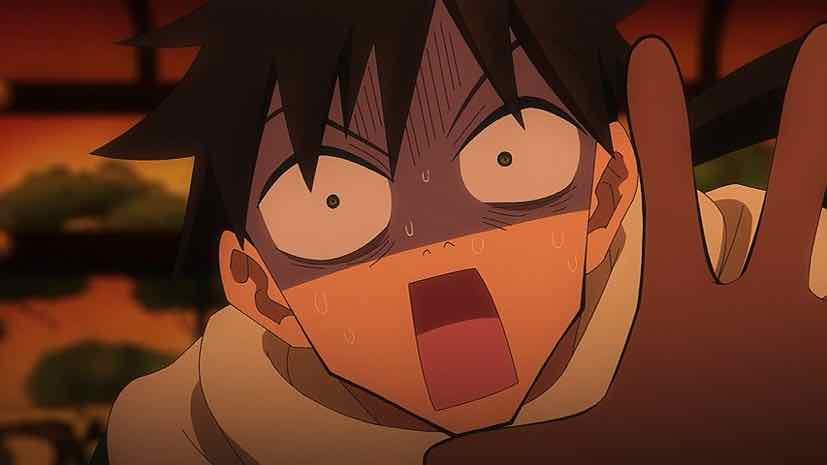 Teru seems most interested in Senya, who he can see is ill at ease in the world. Eventually he comes to fetch the foursome in the morning, ordering them to swallow talismans of concealment and follow him into the dry garden. There he asks a rock for passage into the Realm of Darkness, where they’re met by Hanatora (Itou Shizuka), who he introduces as the local land God of Kyoto (and with whom he seems very friendly). She thanks Senya for having put down the part of her that had been turned into a mad God, and asks him not to blame himself for what’s happened.
Teru seems most interested in Senya, who he can see is ill at ease in the world. Eventually he comes to fetch the foursome in the morning, ordering them to swallow talismans of concealment and follow him into the dry garden. There he asks a rock for passage into the Realm of Darkness, where they’re met by Hanatora (Itou Shizuka), who he introduces as the local land God of Kyoto (and with whom he seems very friendly). She thanks Senya for having put down the part of her that had been turned into a mad God, and asks him not to blame himself for what’s happened.
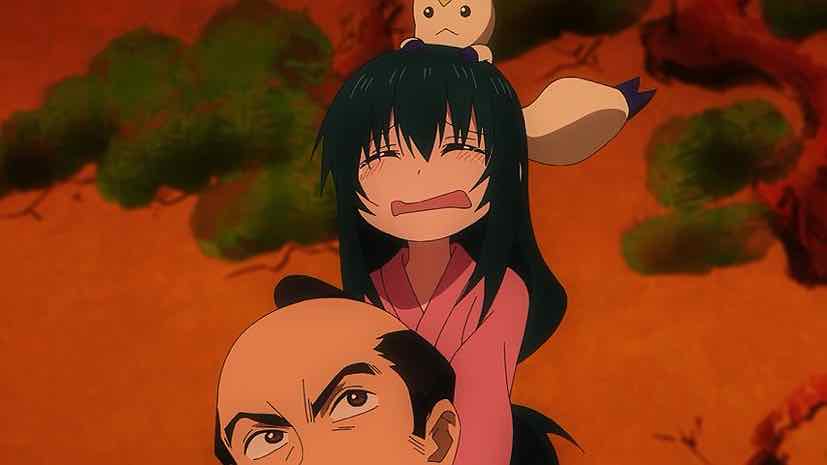 Whatever his ultimate aim is, Teru pointedly takes interest in Senya’s existential discomfort with himself. Tsukiko, Nau, and Shinsuke are basically passengers during the trip to the other world. Teru and Senya have a philosophical debate over many things, among them the boy’s own nature. Senya argues that the power of the World of Darkness should never be used in the affairs of men, but Teru protests that humans fight and kill each other with or without those powers – when an arrow pierces your heart, you’re just as dead. Senya despairs that he’d hoped he could jettison this power he could become human, but if conflict is human nature, what’s the point?
Whatever his ultimate aim is, Teru pointedly takes interest in Senya’s existential discomfort with himself. Tsukiko, Nau, and Shinsuke are basically passengers during the trip to the other world. Teru and Senya have a philosophical debate over many things, among them the boy’s own nature. Senya argues that the power of the World of Darkness should never be used in the affairs of men, but Teru protests that humans fight and kill each other with or without those powers – when an arrow pierces your heart, you’re just as dead. Senya despairs that he’d hoped he could jettison this power he could become human, but if conflict is human nature, what’s the point?
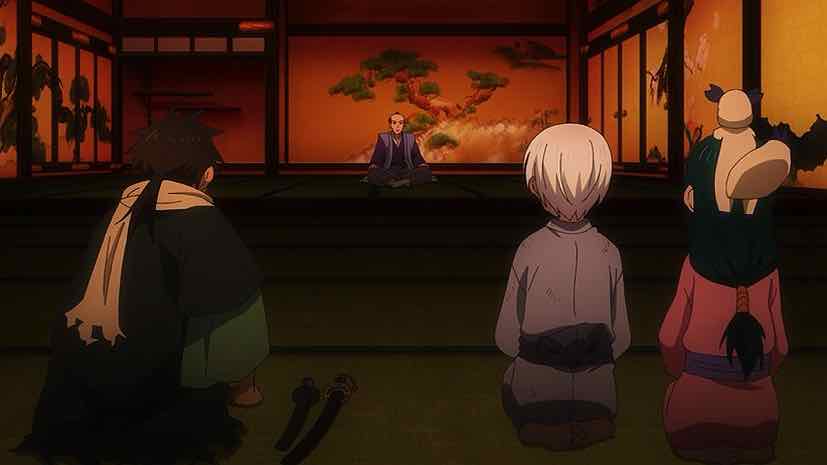 Is there more to Teru’s interest in Senya than compassion? Perhaps – but it seems very clear that the compassion he displays is genuine. He asks the shirodouji (“pale boy”) if he’s not in fact human, when in fact he looks like one to him. “I’m a monster.” Senya replies. Nonsense, says the Shogun – you’re just a pale little human with katawara inside him. And as if to prove Senya’s humanity, Yoshiteru asks Tsukiko into the palace and she emerges dressed in fine Egyptian raiment. On the subject of hearts being pierced, it’s clear how Senya feels when he looks at her.
Is there more to Teru’s interest in Senya than compassion? Perhaps – but it seems very clear that the compassion he displays is genuine. He asks the shirodouji (“pale boy”) if he’s not in fact human, when in fact he looks like one to him. “I’m a monster.” Senya replies. Nonsense, says the Shogun – you’re just a pale little human with katawara inside him. And as if to prove Senya’s humanity, Yoshiteru asks Tsukiko into the palace and she emerges dressed in fine Egyptian raiment. On the subject of hearts being pierced, it’s clear how Senya feels when he looks at her.
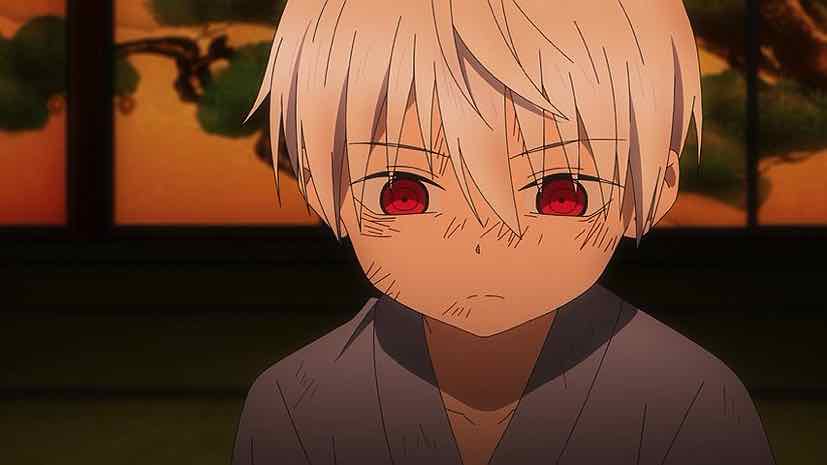 That trip into Kyoto is, without question, the happiest we’ve seen Senya (which is without question what Yoshiteru’s intentions were). In Tsukiko, Shinsuke, and Nau (whose affection for the trio is now beyond dispute) Senya has something like a family. Tsukiko herself is swept up in the moment, thanking Senya for saving her village. When he protests (as always) that no, he deserves no thanks but instead derision, she insists that he’s a good boy. “Ii ko, ii ko!” she says resolutely. Then, grabbing his hands, “Iko (Let’s go)!”. That’s as Mizukami a scene as it gets – combining deep character dynamics with a dad joke.
That trip into Kyoto is, without question, the happiest we’ve seen Senya (which is without question what Yoshiteru’s intentions were). In Tsukiko, Shinsuke, and Nau (whose affection for the trio is now beyond dispute) Senya has something like a family. Tsukiko herself is swept up in the moment, thanking Senya for saving her village. When he protests (as always) that no, he deserves no thanks but instead derision, she insists that he’s a good boy. “Ii ko, ii ko!” she says resolutely. Then, grabbing his hands, “Iko (Let’s go)!”. That’s as Mizukami a scene as it gets – combining deep character dynamics with a dad joke.
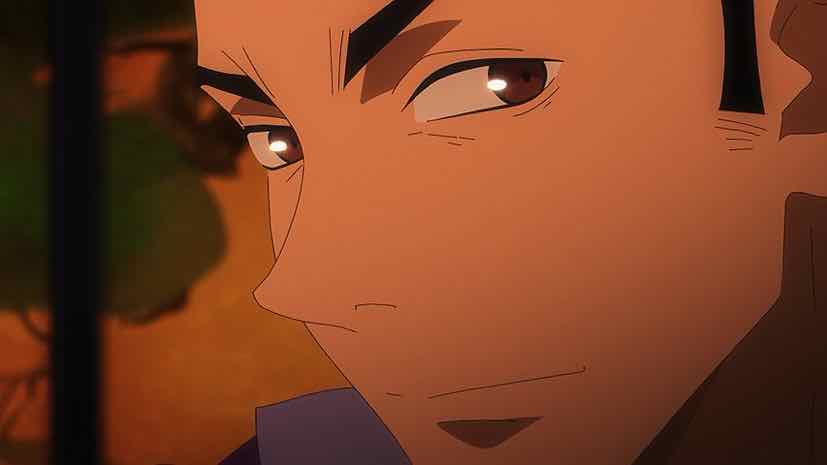 Sadly, the magic is shattered when Tsukiko is swept up by something else entirely (a dragon). Mudou is still after his showdown, and Tago (in league with the daimyo Matsunaga Hisahide) is still stirring up trouble. Mudou takes Tsukiko to Matsunaga’s villa, where Tago compliments her wardrobe and Mudou notes that she reminds him of his older sister. Back at Nijo Senya rails against his hated powers, which draw conflict to him and now once more quail at the thought of taking on a dragon. Teru counsels patience – if it’s a fight Mudou wants, he’s not going to harm a hostage for no reason.
Sadly, the magic is shattered when Tsukiko is swept up by something else entirely (a dragon). Mudou is still after his showdown, and Tago (in league with the daimyo Matsunaga Hisahide) is still stirring up trouble. Mudou takes Tsukiko to Matsunaga’s villa, where Tago compliments her wardrobe and Mudou notes that she reminds him of his older sister. Back at Nijo Senya rails against his hated powers, which draw conflict to him and now once more quail at the thought of taking on a dragon. Teru counsels patience – if it’s a fight Mudou wants, he’s not going to harm a hostage for no reason.
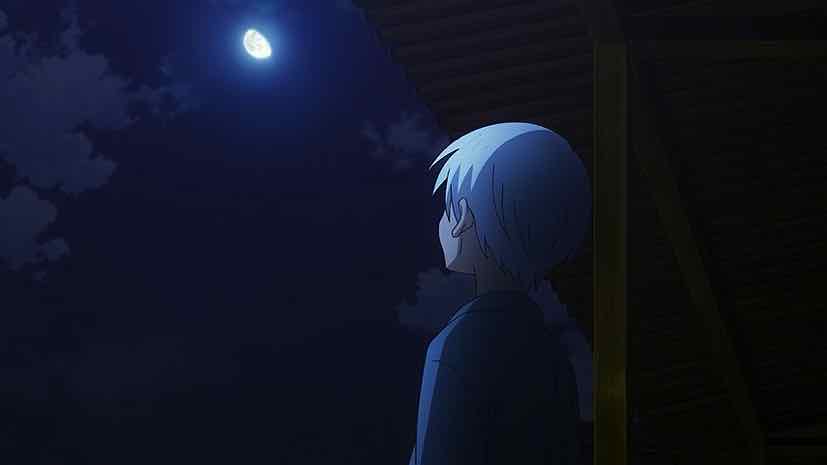 Now, at Senya’s low ebb, Shinsuke finally reveals the true self he hides beneath his “senbei” demeanor. He has the knowledge to teach Senya how to communicate with the thousand katawara inside him. In fact, Hanatora reveals that he goes into the spirit realm to train with his sword every day, telling no one. And he counsels Senya that while he may strive to force his katawara to follow him, the truly powerful spirit warriors are those who develop trust with their katawara (it’s not hard to imagine who he has in mind). Senya curses his nature, Shinsuke his weakness – but they need each other, and now Shinsuke is the one who can help the boy start to see the path to his future open up before him.
Now, at Senya’s low ebb, Shinsuke finally reveals the true self he hides beneath his “senbei” demeanor. He has the knowledge to teach Senya how to communicate with the thousand katawara inside him. In fact, Hanatora reveals that he goes into the spirit realm to train with his sword every day, telling no one. And he counsels Senya that while he may strive to force his katawara to follow him, the truly powerful spirit warriors are those who develop trust with their katawara (it’s not hard to imagine who he has in mind). Senya curses his nature, Shinsuke his weakness – but they need each other, and now Shinsuke is the one who can help the boy start to see the path to his future open up before him.


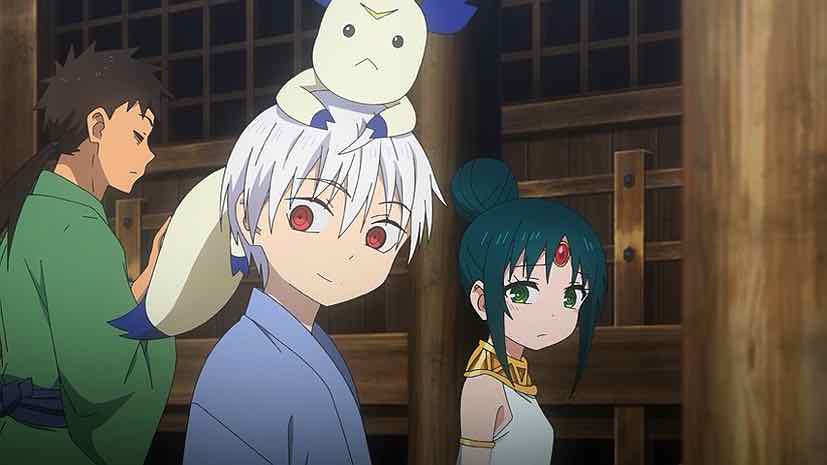
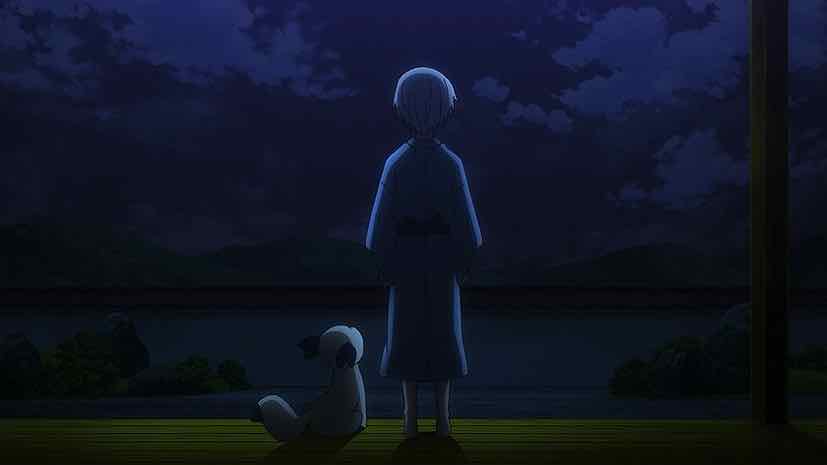
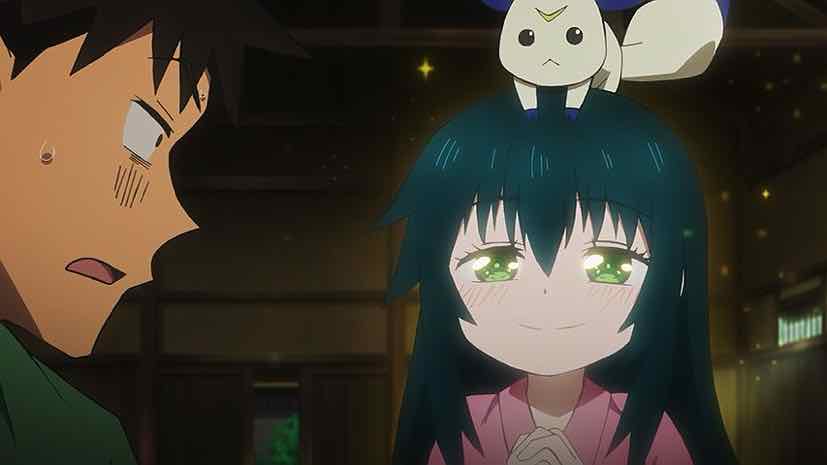
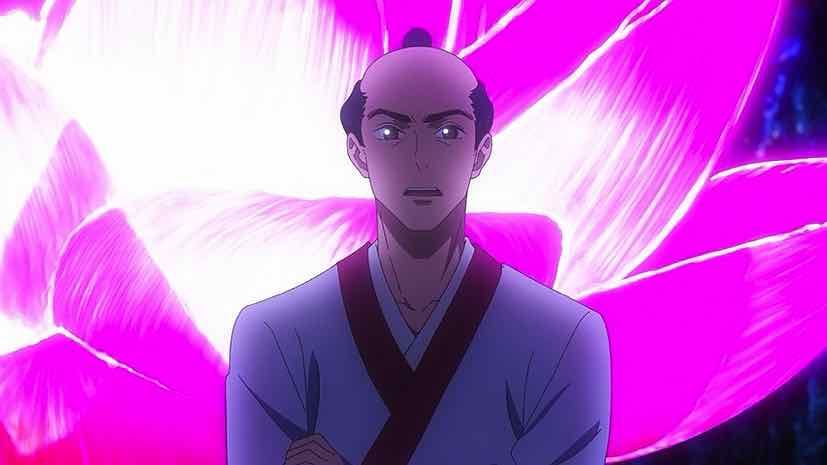
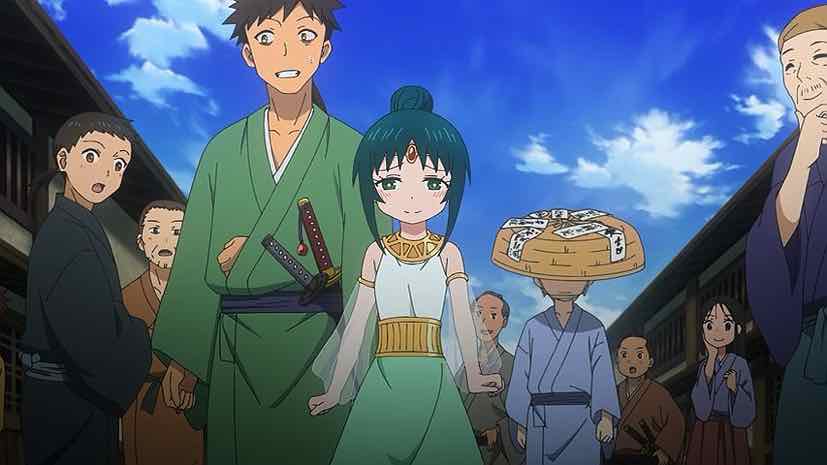
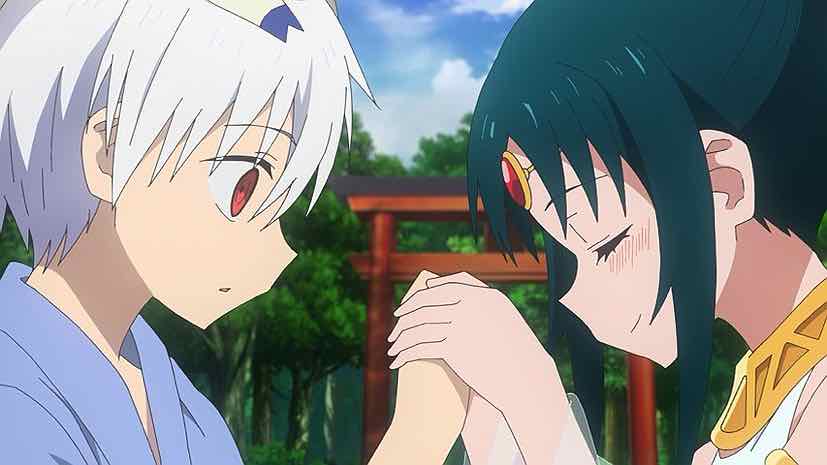
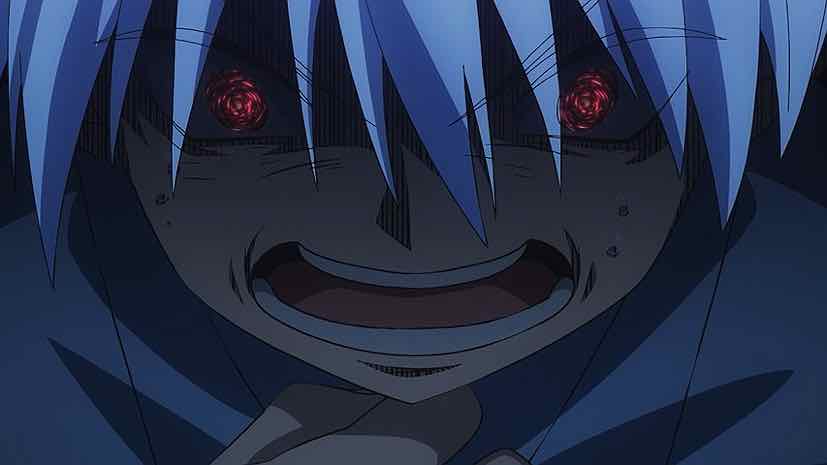
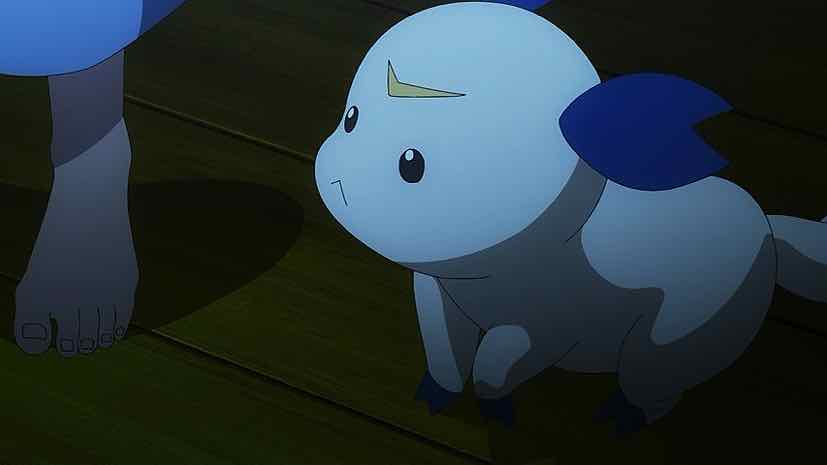
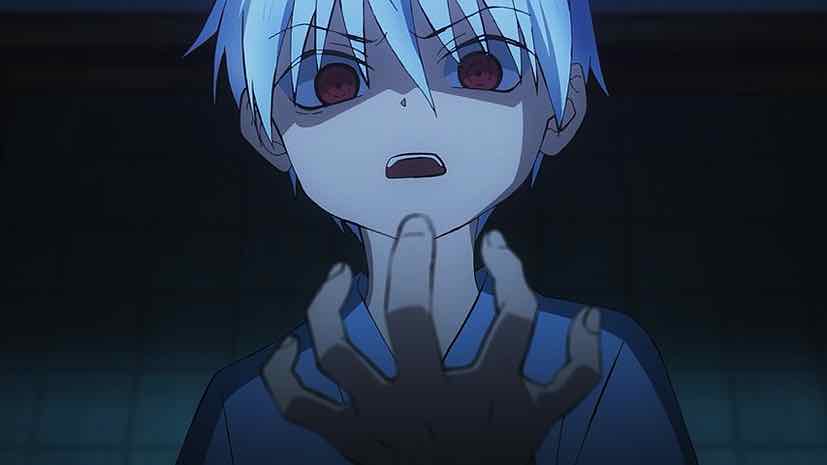
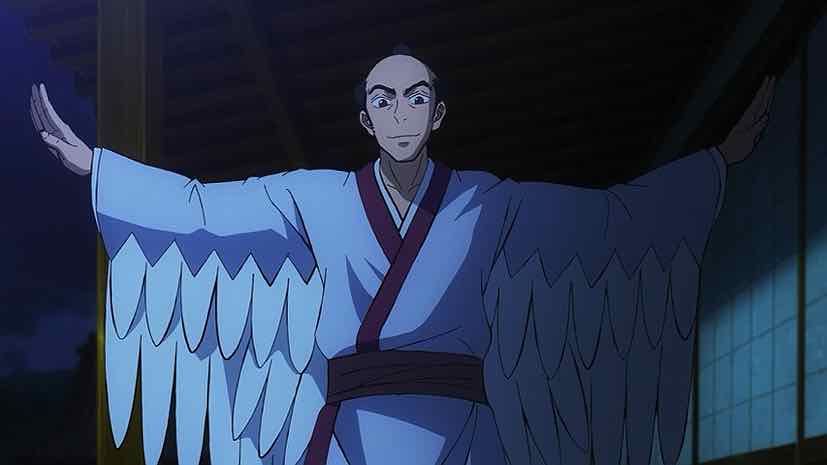
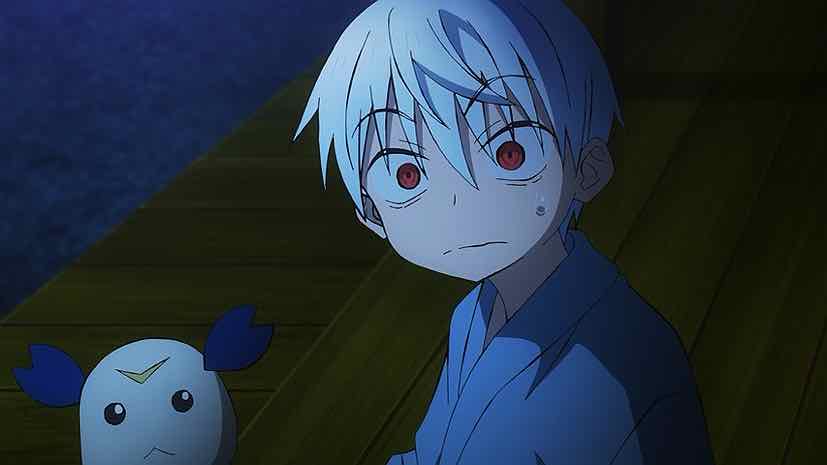
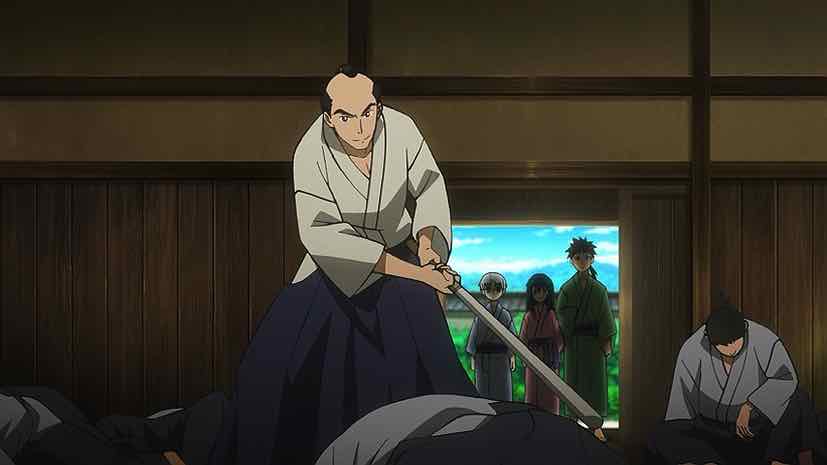
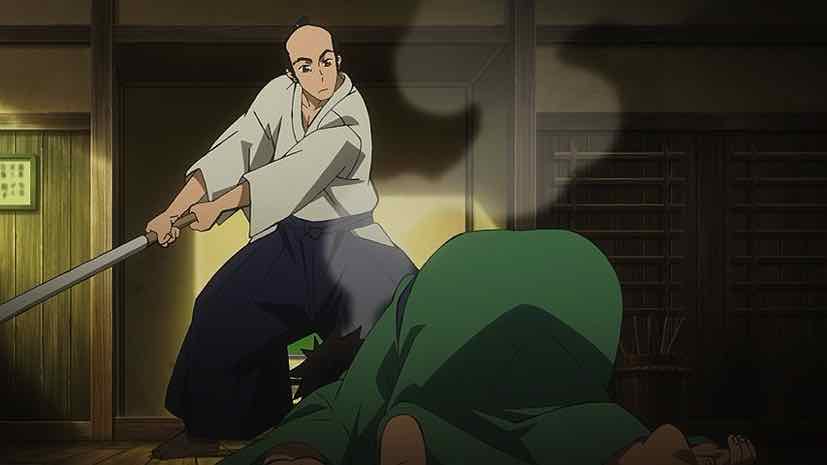
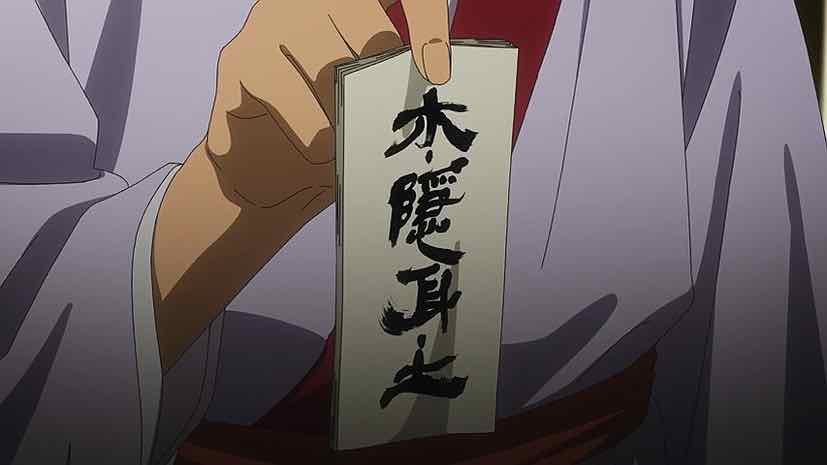
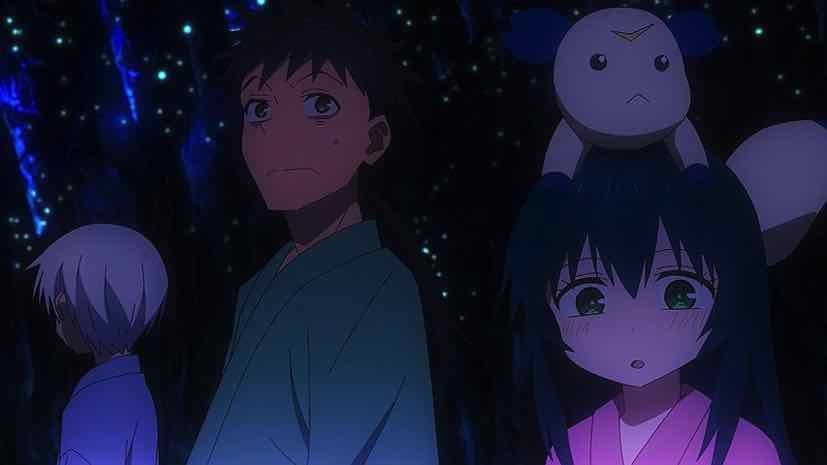
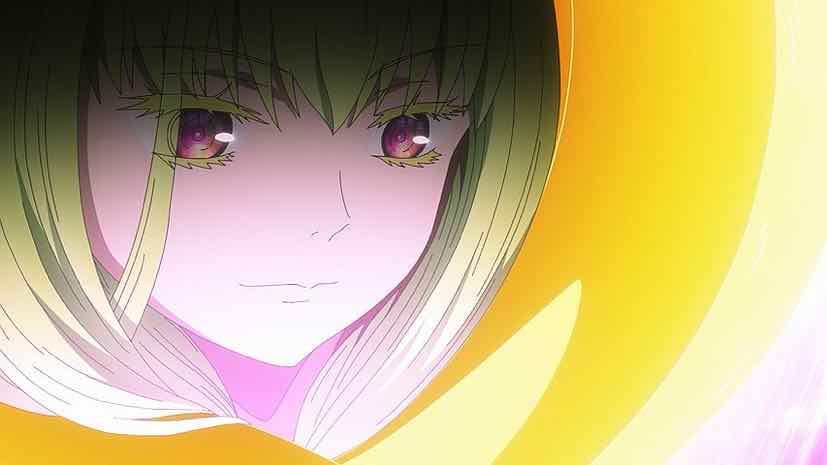
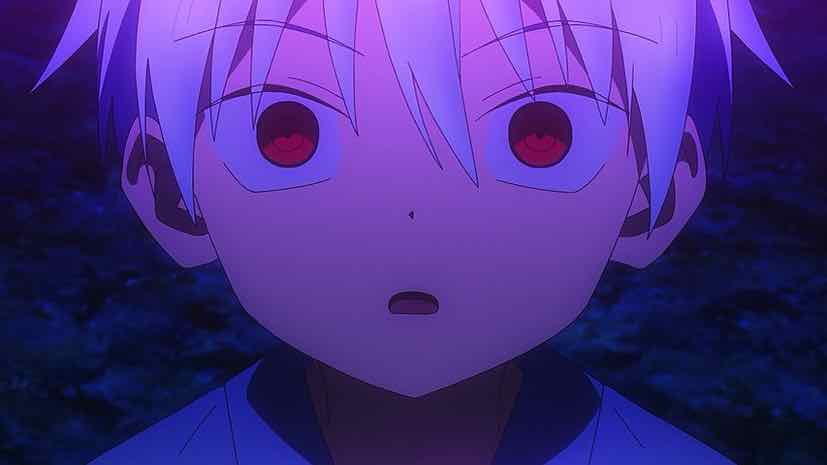
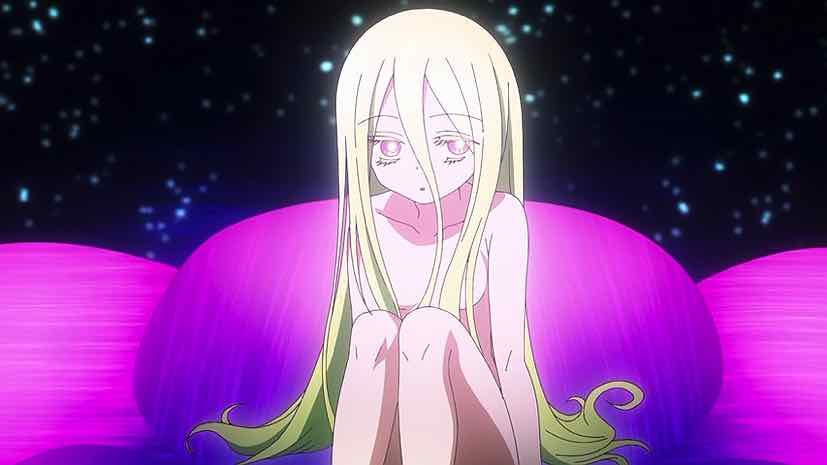
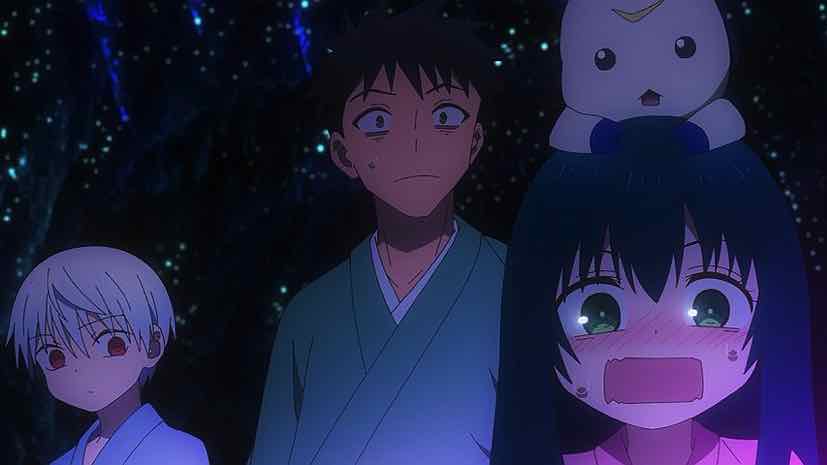
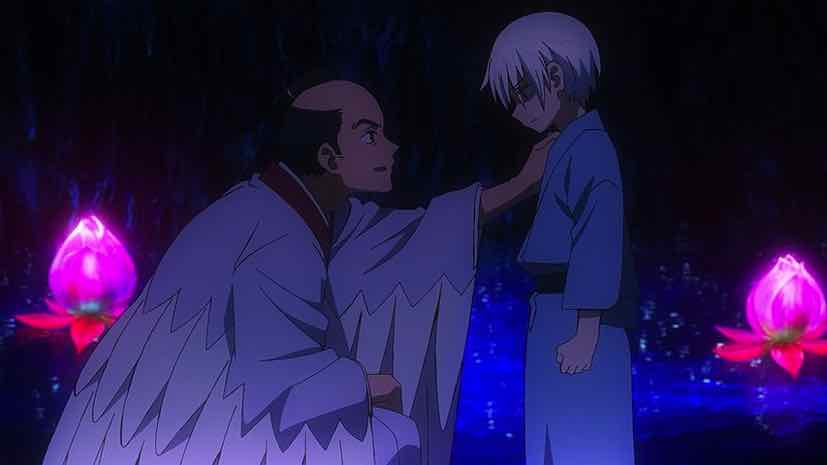
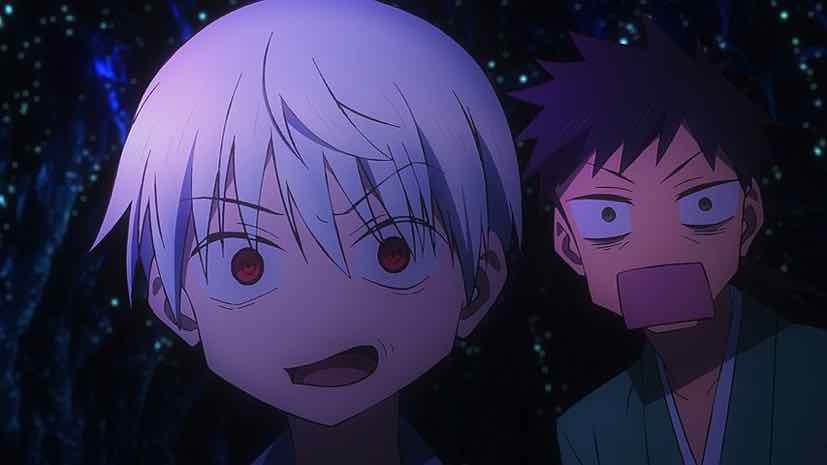
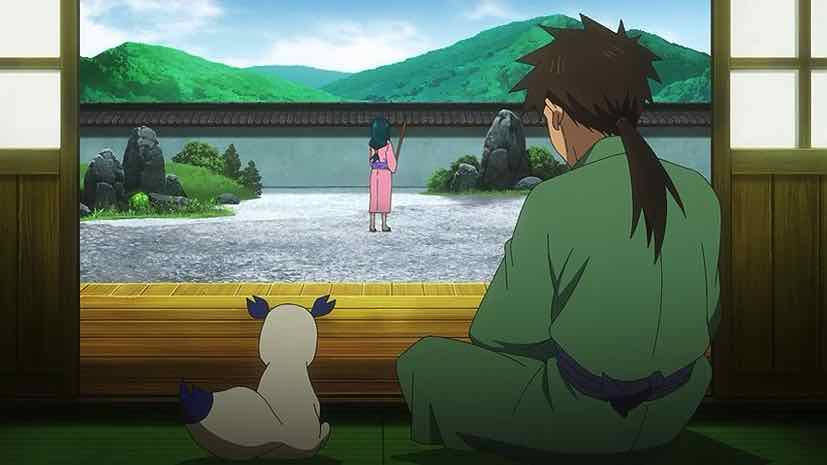
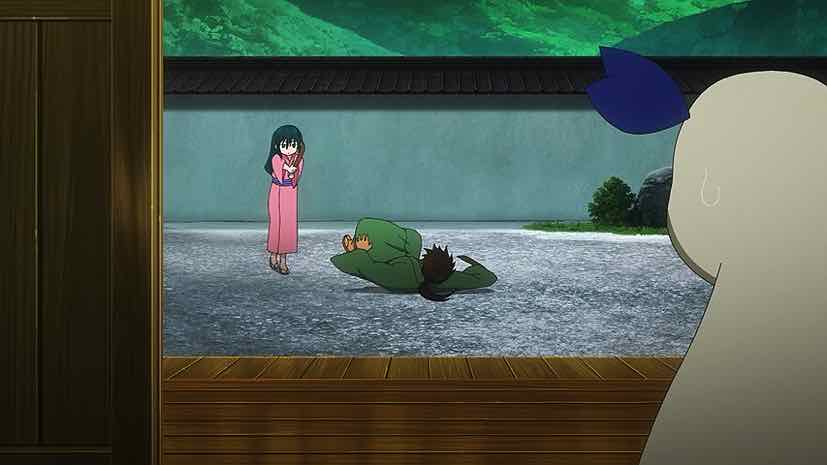

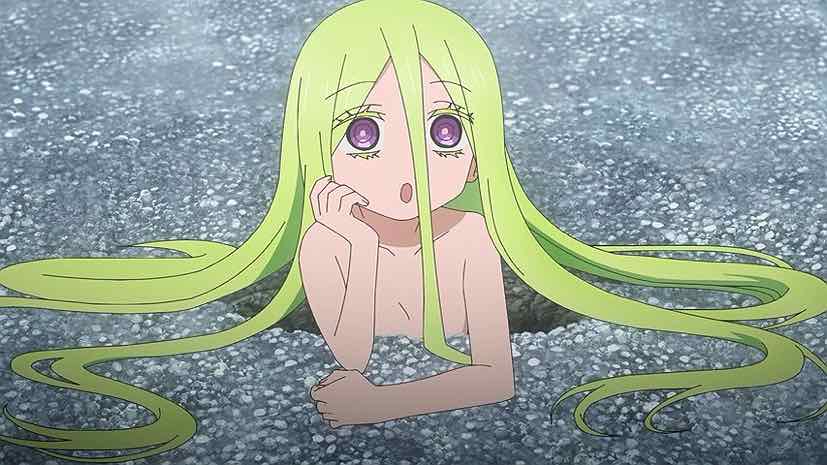
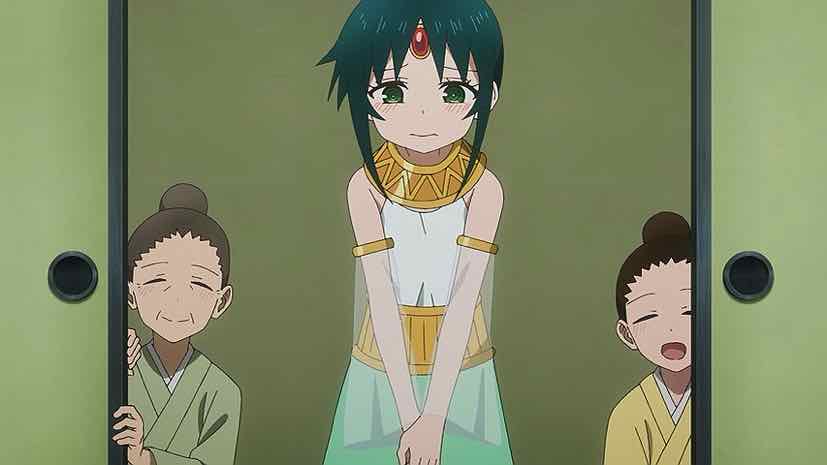
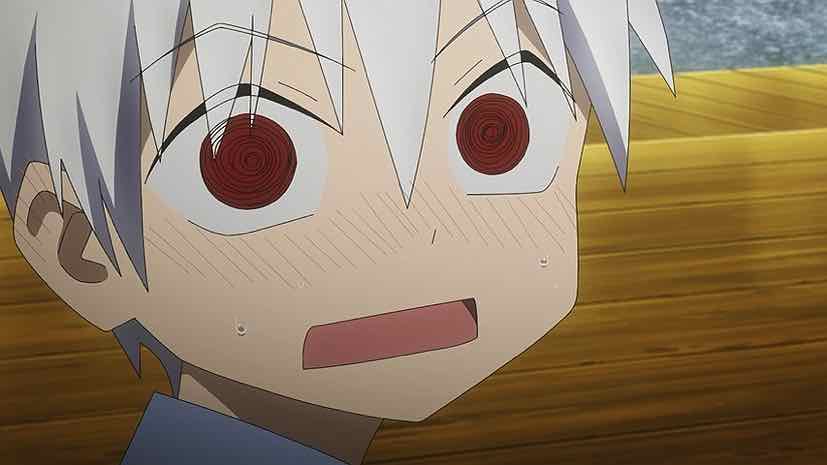
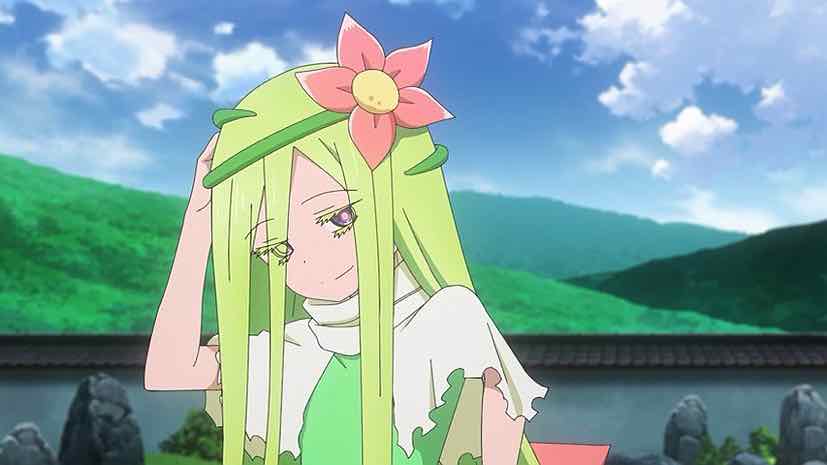
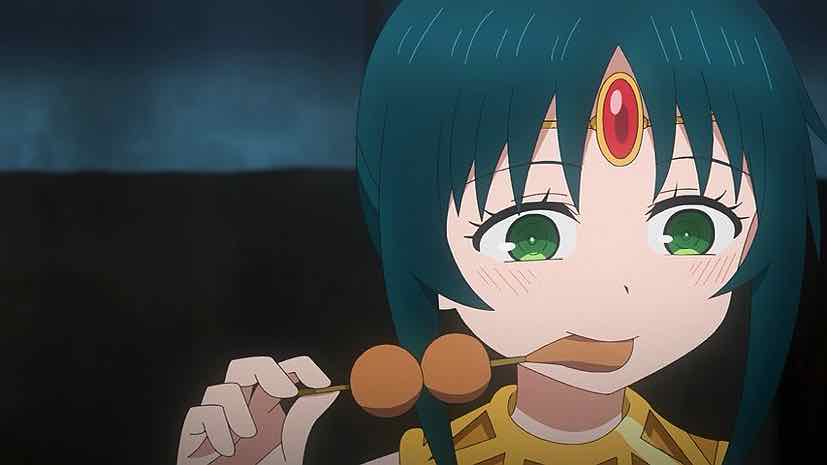
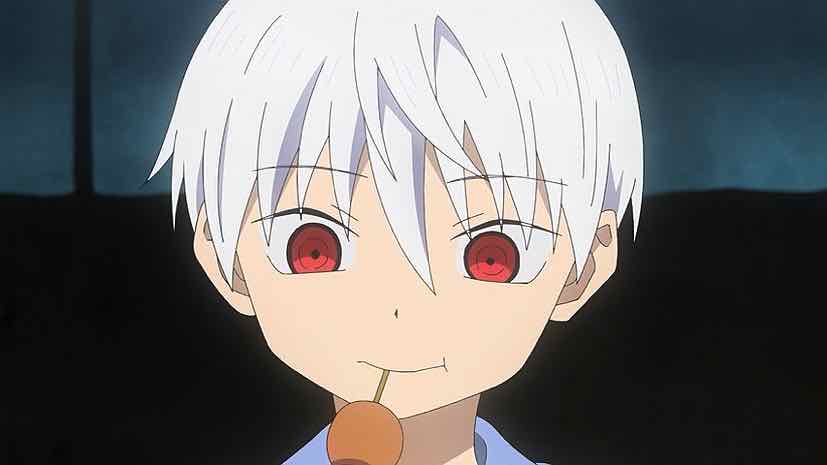
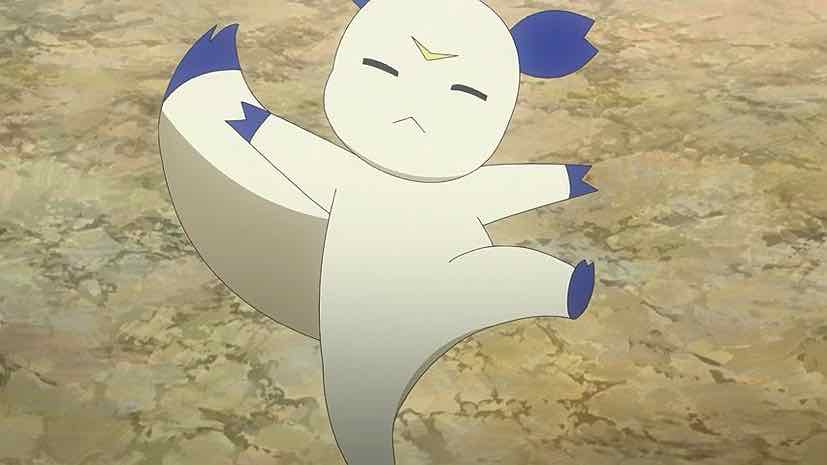
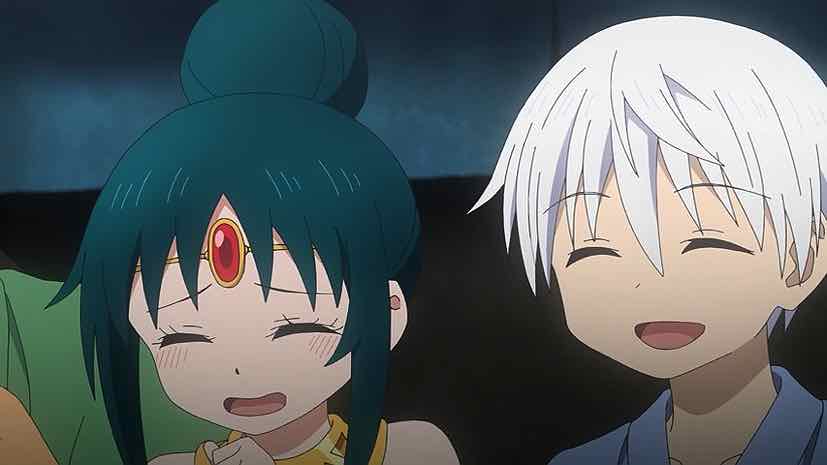
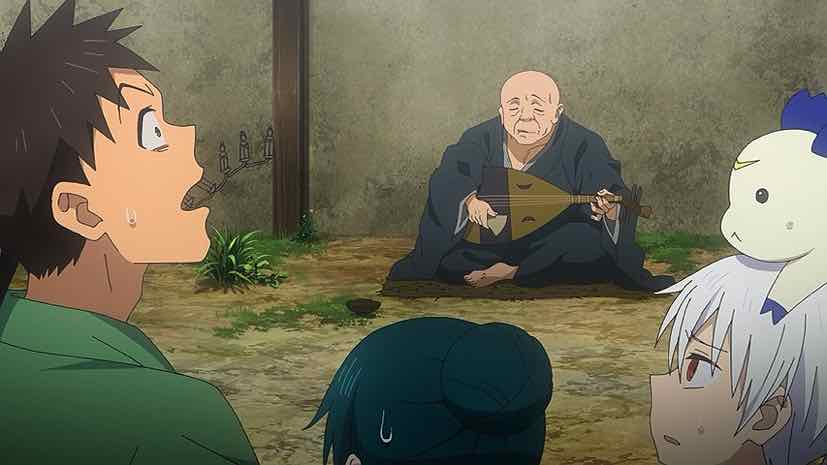
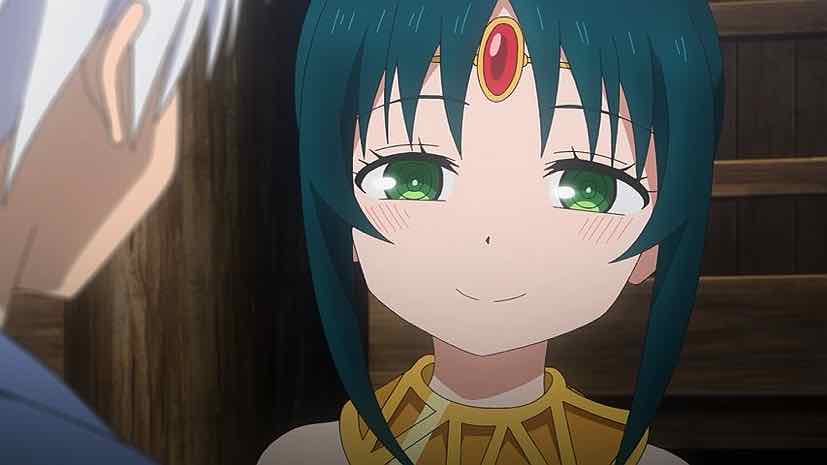
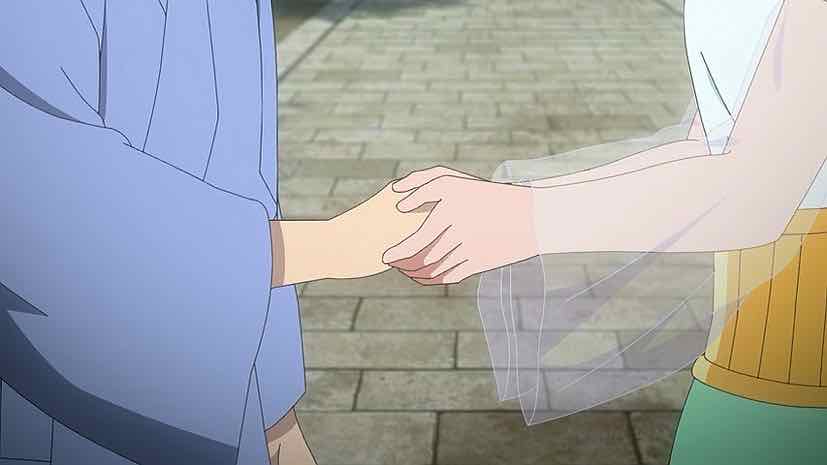
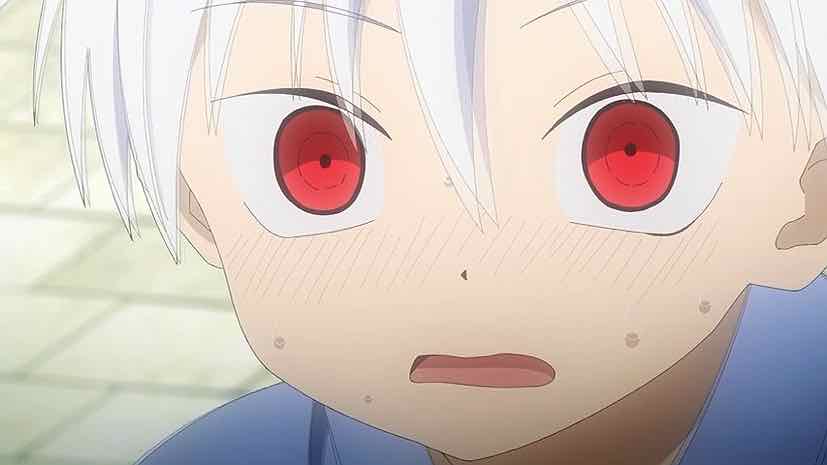
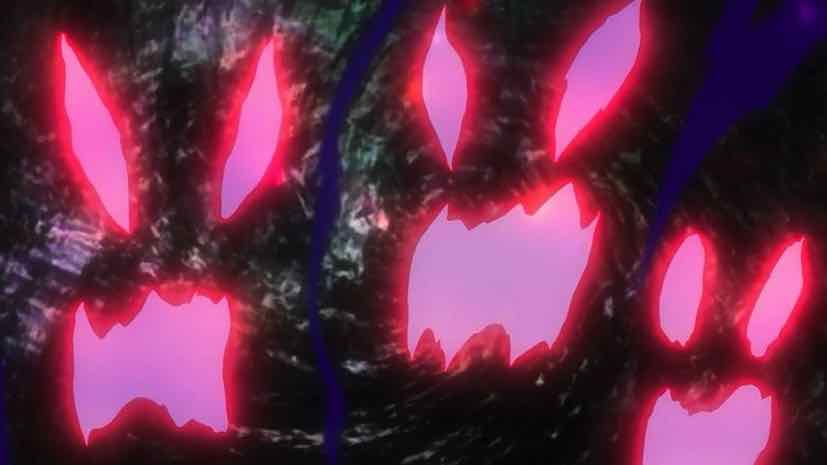

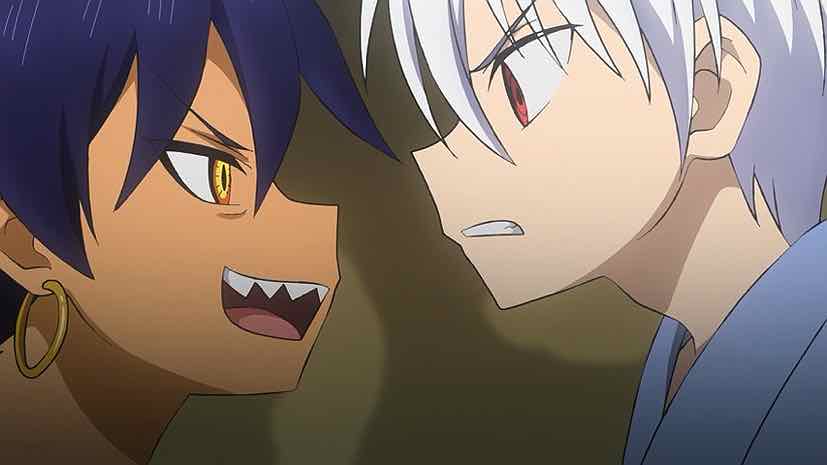


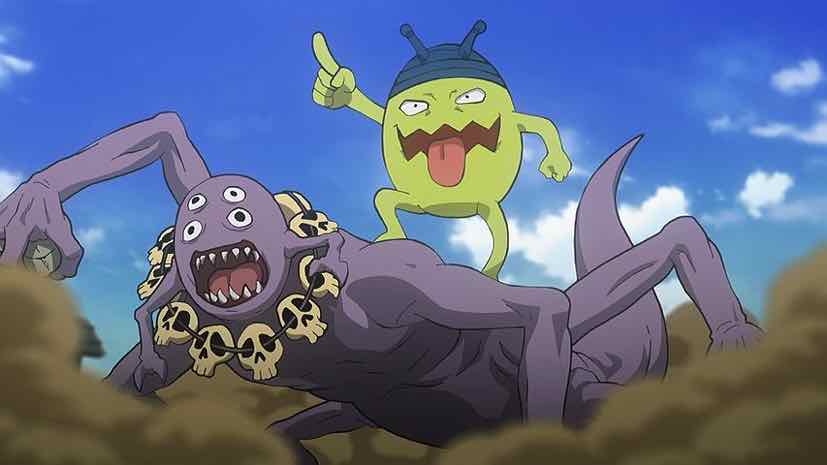

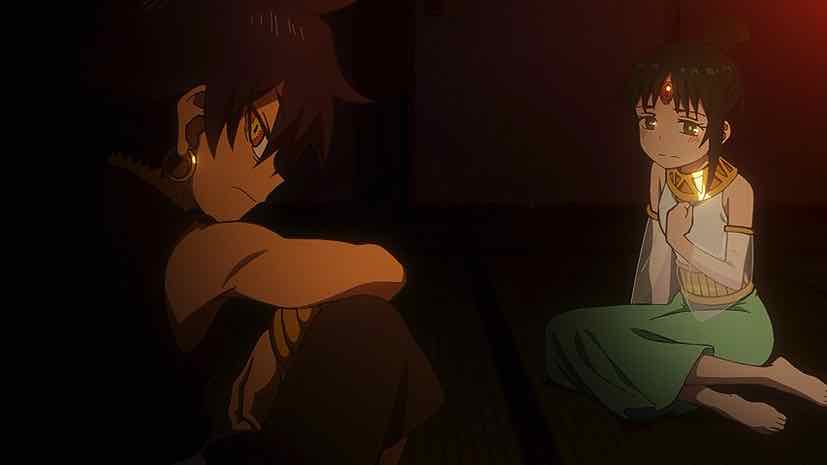
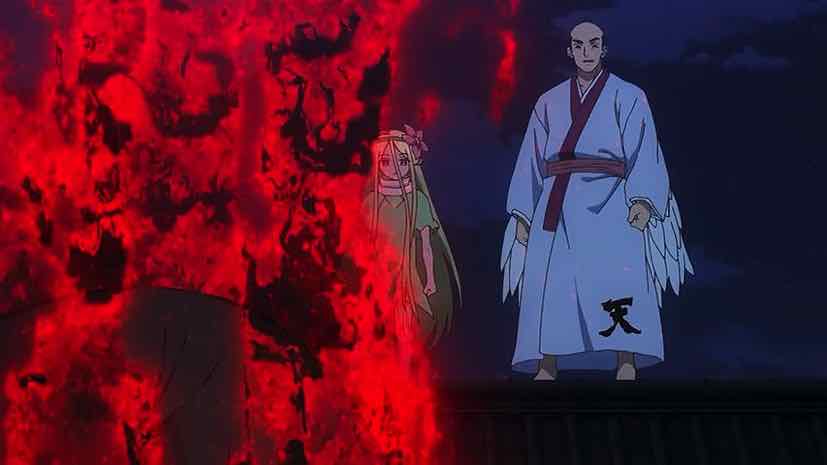
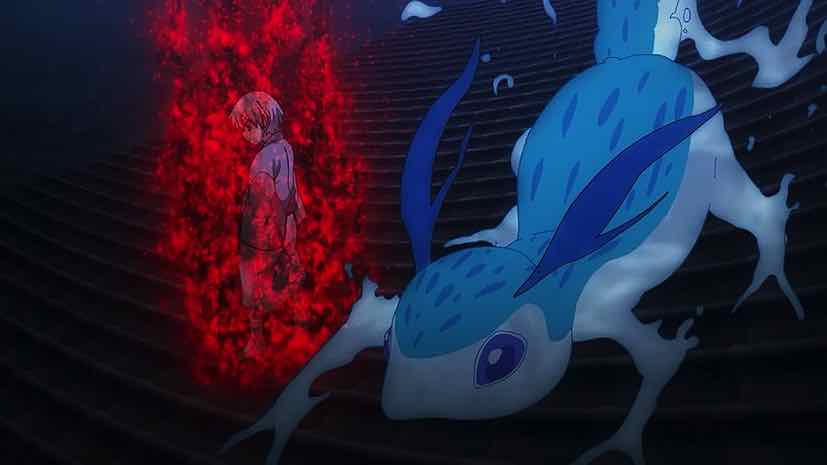
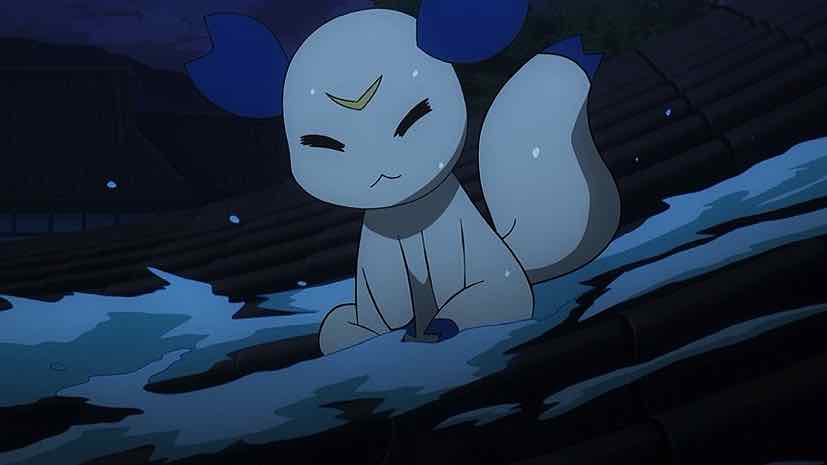
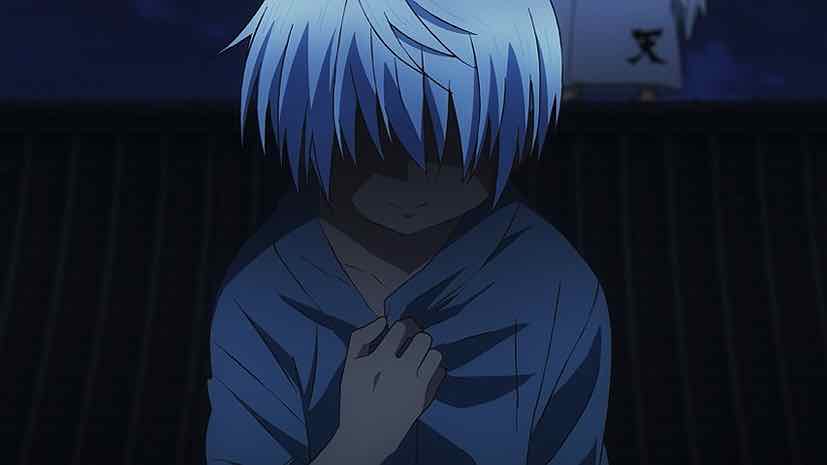
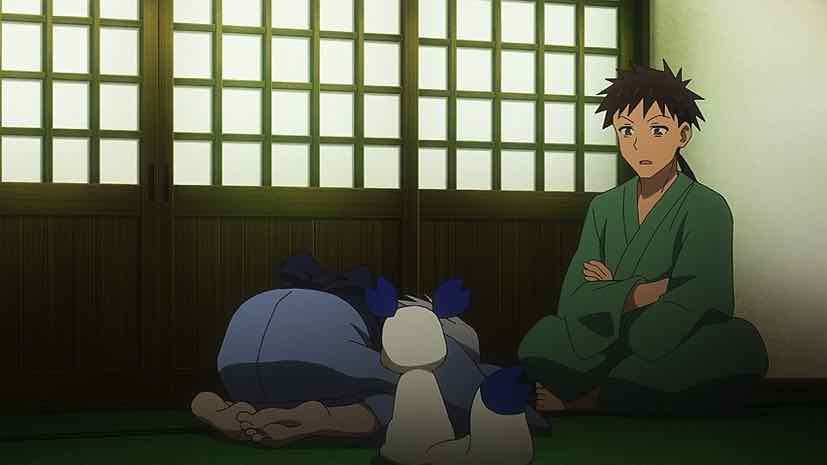

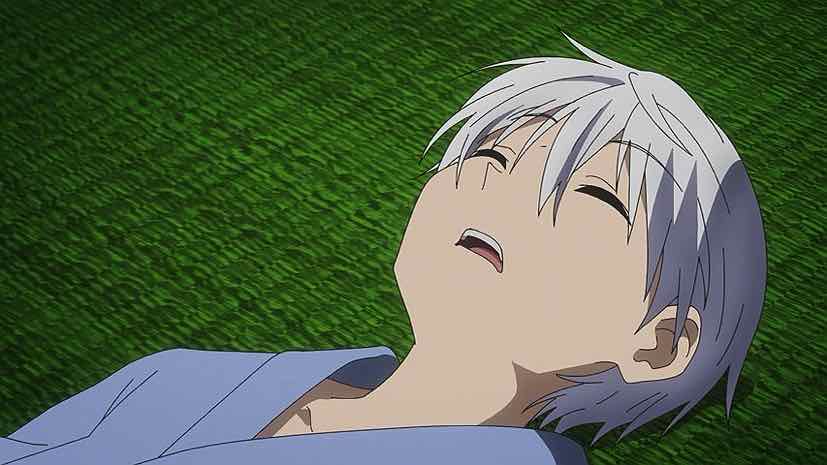
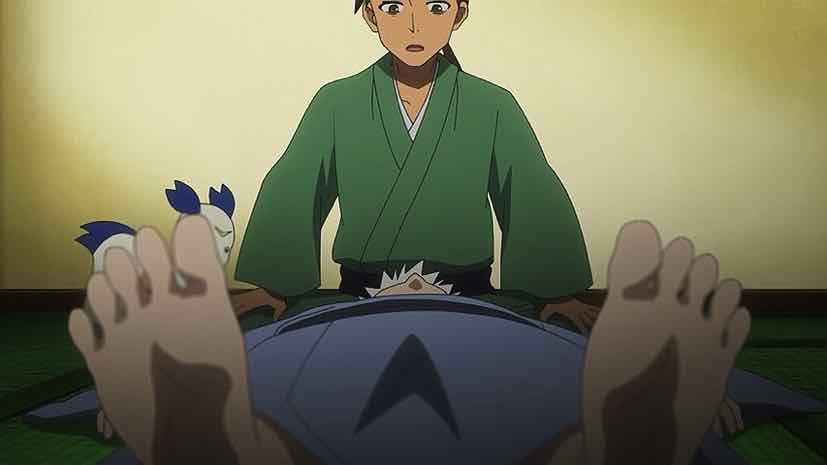
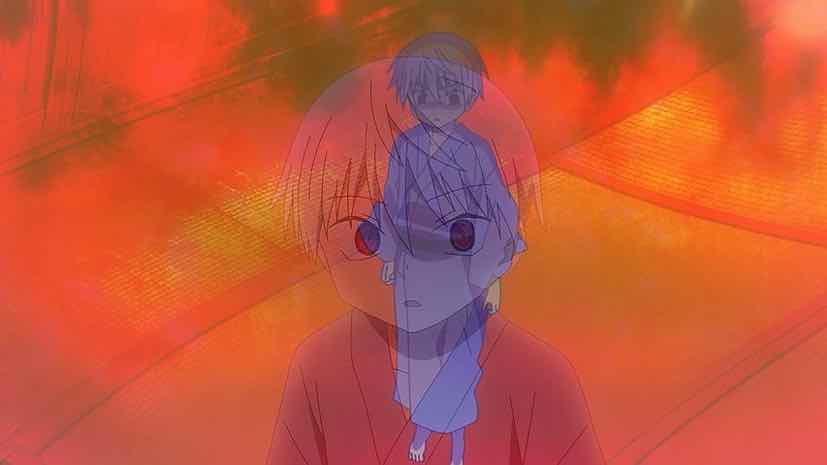
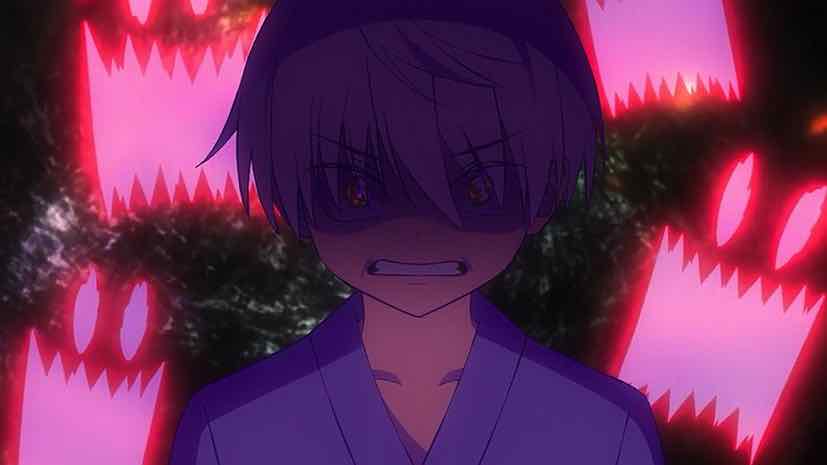
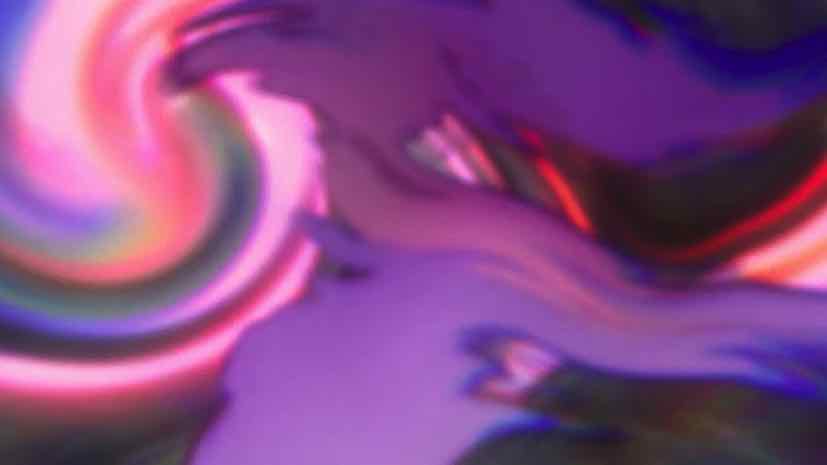
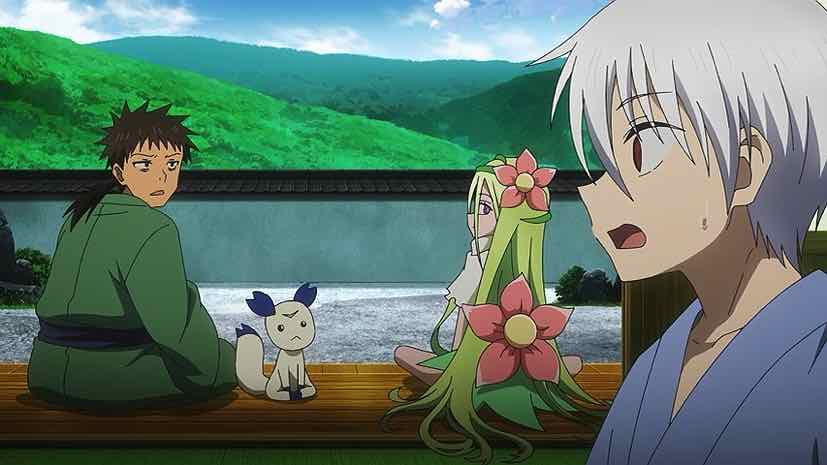
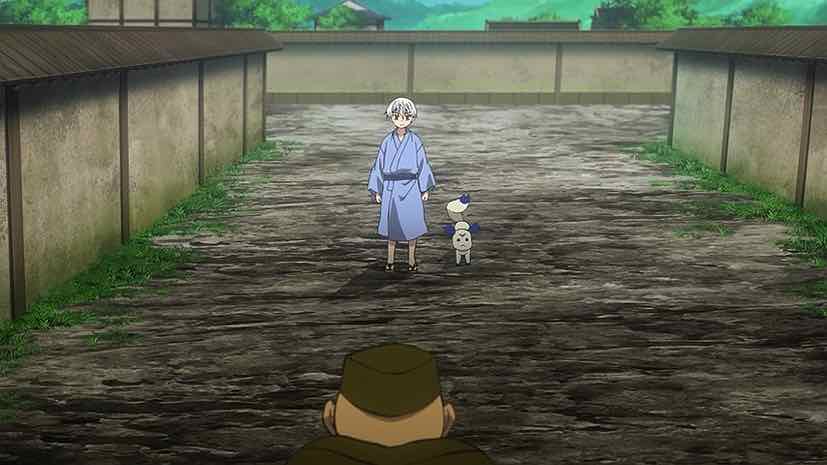
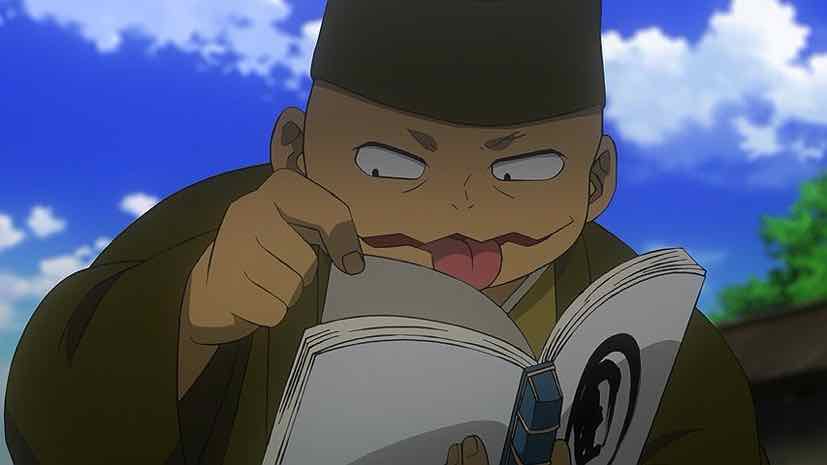
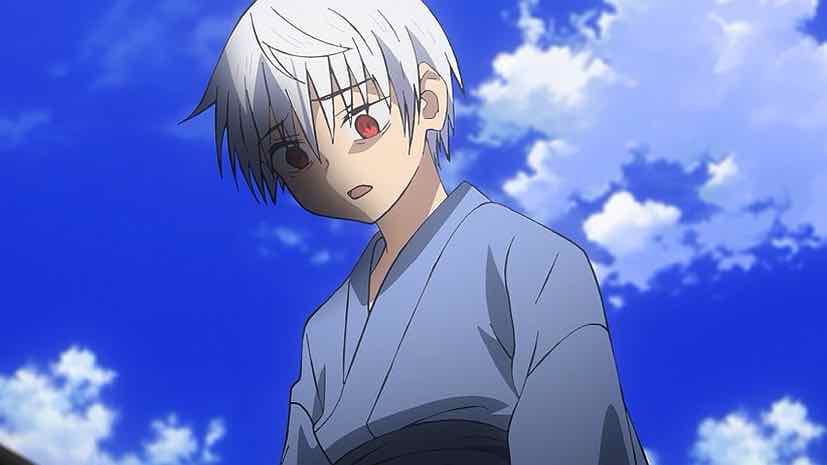
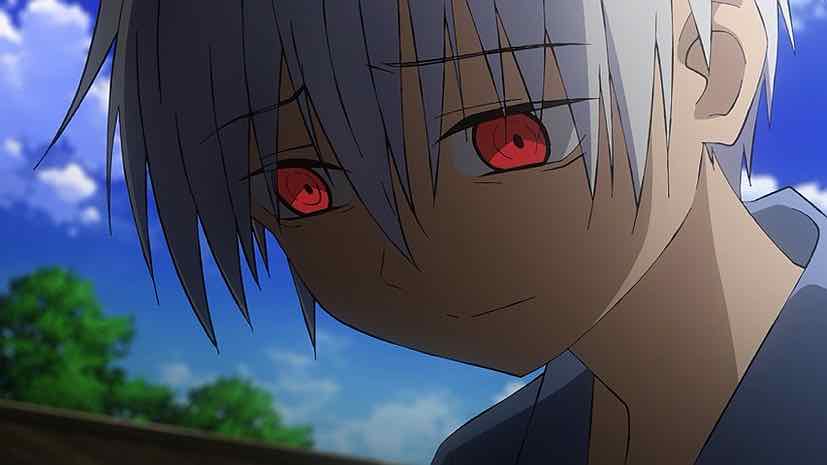
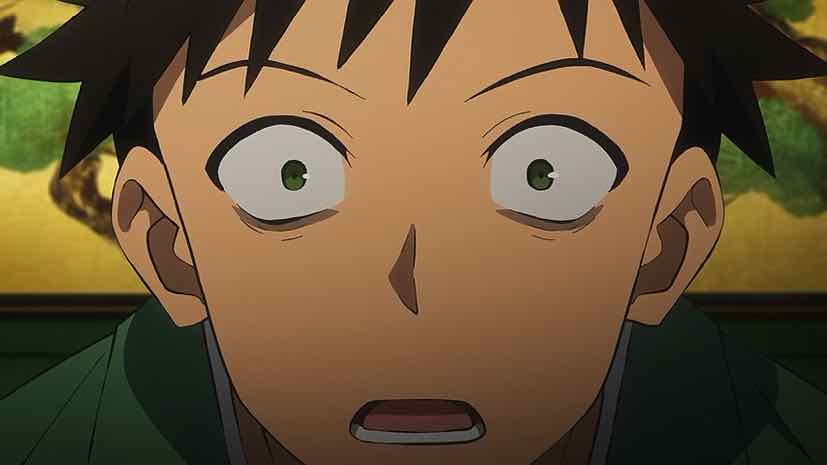
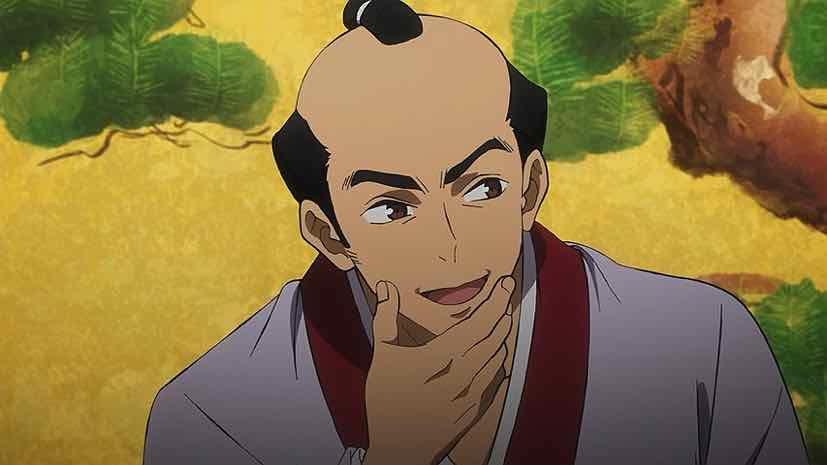
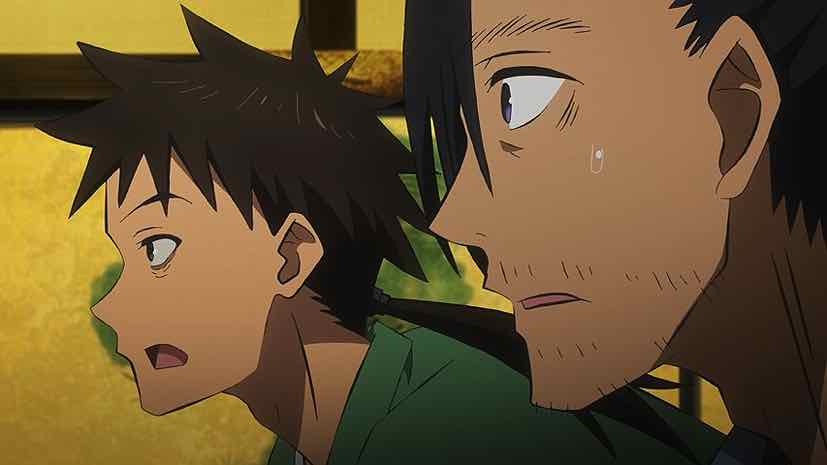
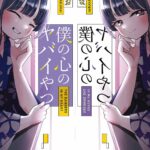
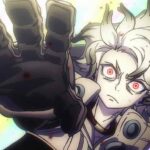
Nicc
August 10, 2024 at 6:42 amI had the same reaction as Shinsuke when it was revealed that the samurai was actually the shogun and based on Ashikaga Yoshiteru. I’m not so sure about the bird thing, but I don’t know enough about him to know if that’s true or not. Right, he’s the shogun, he wants to fly and is indeed something of a loon. He’s also a damn good swordsman once he sheds those feathers. We haven’t had ourselves a bird fanatic since Shunpei from “Migi to Dali”. He does indeed take interest in the group and to take them under his wing. He does have a particular interest in Senya, the latter who is questioning his humanity more and more.
The field trip to the Realm of Darkness was quite a trip. Teru seems to be very much involved in this world, though he does not appear to have any special powers himself. It’s also the realm where the local God of Kyoto, Hanatora, resides in. Senya immediately seems the resemblance to the god that he just killed. Hanatora reassures him that it was just a branch of her that turned mad and to not blame himself. Teru and Senya do get into a philosophical debate about Senya’s nature and to question the morality of using special powers. Teru also reassures Senya that he’s a human and not a monster. He’s a human boy with katawara in him.
It’s with that group date with Tsukiko that really opens up his truly human heart. He really does have something resembling a family now. Alas, the moment is spoiled when Mudou shows up again and this time he’s successful in kidnapping Tsukiko. This got me wondering if Mudou is partly a siscon along with desiring that battle with Senya. Back in Kyoto, Senya is stewing and his existential crisis grows. Here’s where Shinsuke steps in. While his sword skills are still lacking, he’s been training in the sprit realm everyday. Interesting, it sounds like he should be better with using the powers of Arabuki than actually swinging him around as a sword. Oh yeah, and the blade is broken when he tried to stoo Mudou earlier. I’m curious to see what his new form will look like.
Shinsuke teaches Senya how to enter his spirit realm and to communicate with his thousand katawara, all which have their own distinct personalities. That may take some work. However, he doesn’t have a lot of time. In just a few days, Matsunaga Hisahide will be attacking and Teru has foreseen his own death on that day (Was it just me or was he looking at the camera while stating that? He even called it a spoiler). The actual Yoshiteru committed suicide, but Teru doesn’t seem like the type who’s going to end it that way.